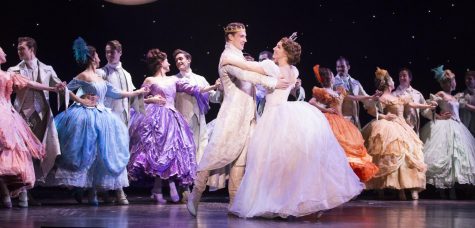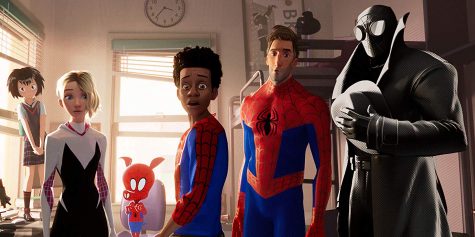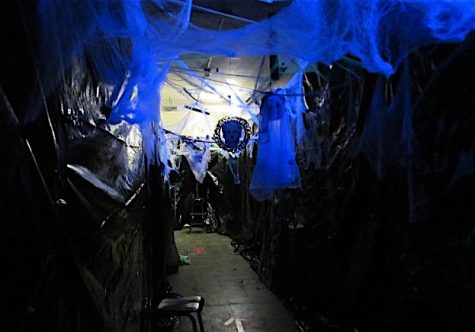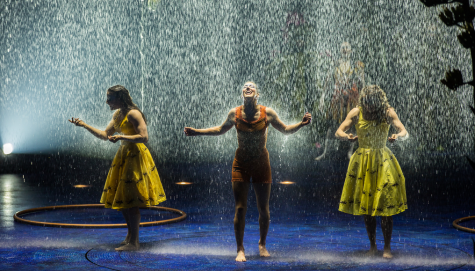This big, beautiful space awaits big, beautiful voices
Shubert Theater is home to Boston Lyric Opera
Even when it’s empty, there is a lot going on.
The Shubert Theater is a very fancy building in Boston’s Theater District. It has a nice tile floor and beautiful pictures in the lobby and a huge chandelier that weighs about 2 tons.
It is home to the Boston Lyric Opera. The BLO will put on three operas this season, “L’elisir d’amore,” “The Abduction from the Seraglio,” and “Hansel and Gretel” (for children and families).
Michael Patterson, the BLO’s production manager, needs two weeks to get the nearly 100-year-old building ready.
“I have the coolest job because I get to know about all of the stuff that is going on in the building,” he said.
Inside the main theater, the walls are beige with gold-colored patterns. There are 1,600 bright seats covered in red velvet. Because the operas are in Italian and French, plasma TVs hang near the stage so the audience can follow along with the English translations. The sound is so good in the theater that only two speakers are needed for people sitting under the balcony.
Above it all is the crystal chandelier. It is so big that is only taken down once a year, using pullies, to polish it and replace the light bulbs (whether they need it or not).
In front of the stage is a false floor that hides an orchestra pit that drops 10 feet down, where 50 to 55 musicians usually sit. Some of the musicians wear ear plugs because the person sitting behind them might be playing loud instruments.
Patterson said the BLO uses live musicians instead of taped music, because “There’s something great about a live show with live singers. It adds to the thrill,’’ he said. “It’s much more of an experience.”
There are many people needed to put on an opera. Besides the musicians, there are 20-30 singers, and about 100 backstage people.
The backstage language of the theater is taken from ships because the first people to tie the knots to hold the poles together were fishermen.
Above the black stage floor at the Shubert Theater – the ceiling is 74 feet high — are 64 poles that hold curtains and scenery. The ropes that control them, known as the “fly system,” use a perfectly balanced weight system so the poles won’t fall and hit someone. When Patterson lowers a big pipe from the high ceiling, using ropes called “lines,” it is completely silent.
Curtains that weigh 50-100 pounds are stored in hampers but the rest of the scenery is stored in Avon. The BLO barters and trades scenery with companies throughout country. Sets are built to be completely collapsible, taken apart, and moved.
Underneath the stage is called the “Trap Room,’’ because that would be where a trap door in the stage floor would lead (if there was one).
The Star Chair is a barber’s chair that was bought from a barber shop down the street that was going out of business. There is big table where people can sit and relax until it is their time to go on stage.
“If it’s busy on stage, then it’s quiet down here,” Patterson said.
Next to the Trap Room is the dressing room. It can fit eight people and has makeup mirrors and lights. There is also a shower for the performers, who often need one after a 2½-hour show.
“Doing an opera can be like playing a sport,” said Patterson, who explained that opera singers perform one night and take one night off.
Singing opera is a controlled scream, he said. In Broadway musicals, the singers usually use a microphone, but there is no microphone in opera.
Before he leaves, Patterson makes sure he turns off all of the lights except one.
At the front of the Shubert stage sits a longtime tradition of the theater called a “ghost light.” It is an ordinary electric floor lamp that is kept on all the time (except for performances) so people — and the “ghosts” of the building – know where the edge is so they won’t fall off.
“The most dangerous place in an empty theater,’’ said Patterson, “is the edge of the stage.”
(Story reported and written by Cunniff Kids News staff reporters Charlotte V., Isabella V., Julia F., and Ryan L., and CKN correspondents Liam W., Erin H., Patrick W., Mairead W., and Maeve W.)
(For more information about the Boston Lyric Opera and the Shubert Theatre, go to http://www.blo.org/ and www.citicenter.org/restoration-shubert.html.)
–April 2, 2008–














